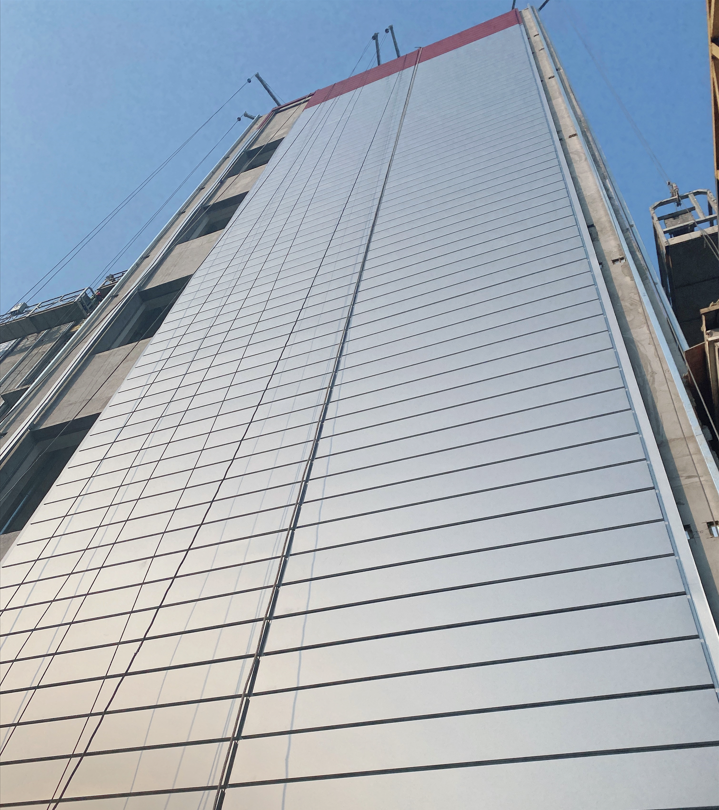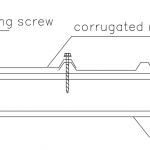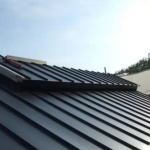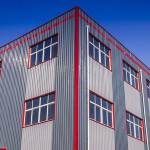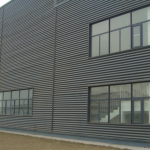Mobile: 8613421351153
What are the sandwich panels
Sandwich panels, also known as composite panels or structural insulated panels, are a type of multi-layer structural cladding system that consists of two thin and strong metal sheets attached to a substantiating core material. The metal sheets are coated with a corrosion-resistant coating and the core material is usually polystyrene, polyurethane, mineral wool.
Composition of sandwich panels
The structural functionality of sandwich panels is similar to the classic I-beam, where two face sheets primarily resist the in-plane and lateral bending loads (similar to flanges of an I- beam), while the core material mainly resists the shear loads (similar to the web of an I-beam).[1] The idea is to use a light/soft but thick layer for the core and strong but thin layers for face sheets. This results in increasing the overall thickness of the panel, which often improves the structural attributes, like bending stiffness, and maintain or even reduce the weight.
Classification of sandwich panels
Sandwich panels can be categorized according to the core material and the function of the sandwich panel.
Sandwich panels with different core materials
Sandwich panels according to the core material to classify the main three: EPS sandwich panels, polyurethane sandwich panels, rock wool sandwich panels.
EPS sandwich panels will only be used in low-rise buildings and temporary buildings due to its flammability; polyurethane sandwich panels are divided into PU sandwich panels and PIR sandwich panels, in terms of heat preservation, PIR sandwich panels are more superior than PU sandwich panels; rock wool sandwich panels are mainly because of the very strong fire-retardant ability to make its large-scale application.
Sandwich panels with different functions
According to the classification of different functions, sandwich panels are divided into wall sandwich panels, roof sandwich panels. Wall sandwich panels are also divided into exterior wall sandwich panels and partition wall sandwich panels.
The difference between wall sandwich panels and roof sandwich panels lies in the fact that most of the wall sandwich panels are flat on both sides of the corrugated panels, while the external corrugated panels of the roof sandwich panels are ribbed to ensure the drainage of rainwater on the roof, as well as to enhance the strength of the roof in order to resist the wind load and snow load, etc. The roof sandwich panels are made from a variety of materials and materials, which can be customized to meet the specific needs of each customer.
Application of sandwich panels
In building and construction, these prefabricated products designed for use as building envelopes. They appear in industrial and office buildings, in clean and cold rooms and also in private houses, whether renovation or new-build. They combine a high-quality product with high flexibility regarding design. They generally have a good energy-efficiency and sustainability.
